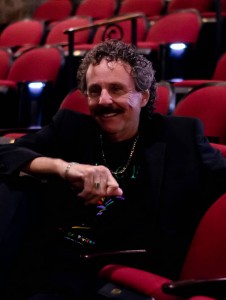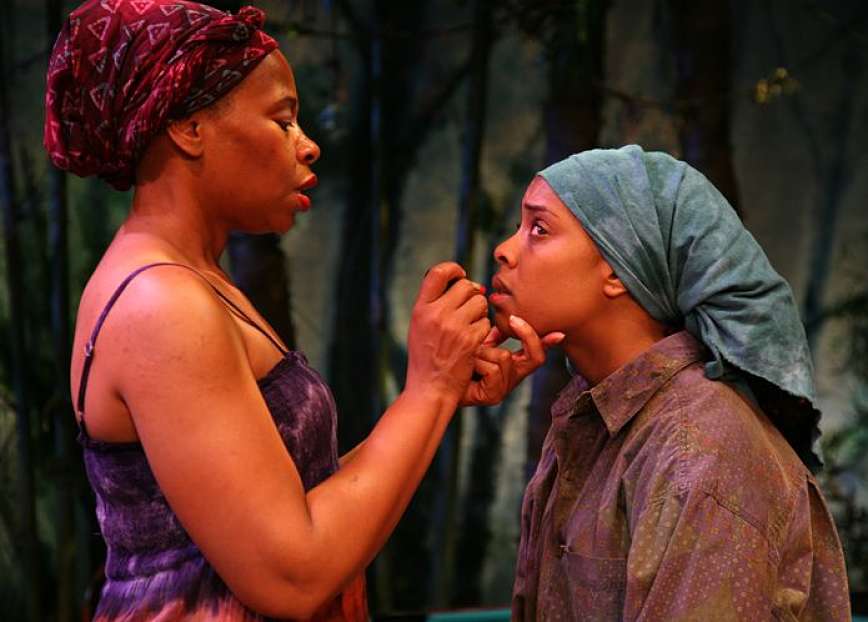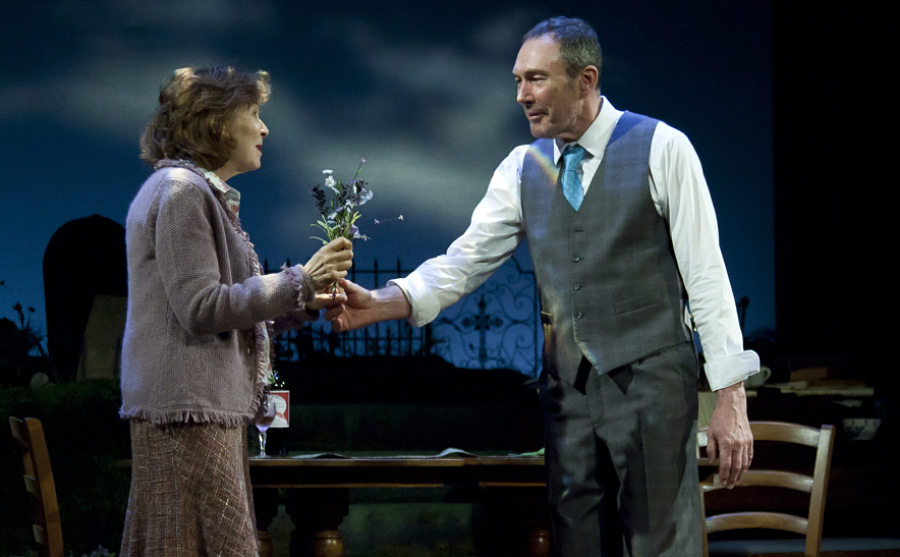SARASOTA, FLA.: When not traversing the 35 miles of the area’s powder-soft beaches, visitors to the small city of Sarasota may be at one of the five performance spaces in the Florida Studio Theatre. The complex, nestled downtown along the Sarasota Bay, is just a skip away from the water. Once home to the historic Sarasota Women’s Club, the mainstage Keating Theatre is now the cornerstone of the theatre spaces at the junction of Cocoanut and Palm Avenues. The historic Gompertz Theatre, the intimate Parisian-style Goldstein and John C. Court Cabarets and the eclectic Bowne’s Lab Theatre span the palm-lined bay front.
We spoke via email to artistic director Richard Hopkins about the theatre’s diverse audiences, how he curates seasons and his hopes for the future.
Who founded Florida Studio Theatre, when, and why?
The theatre was founded as a touring theatre in 1973 by Jon Spelman to create “alternative theatre” for underserved audiences.

Tell us about yourself and your connection to the theatre.
I’ve been here since 1980. Florida was the last place I expected to land, but the opportunities here have been extraordinary. We started with a ramshackle 72-seat theatre and a tiny budget. I wanted to experiment with all the edgy new forms and new theatre that was pouring over from the ’70s. We became the edgy contemporary theatre in Sarasota in the ’80s. Artistically, I needed to expand that palate. My personal artistic evolution and growth is reflected in what we have accomplished. Today we are creating a village of five intimate theatres with an emphasis on new plays and audience development; I have created an array of programs to serve a variety of audiences from 5 to 95.
What sets your theatre apart from others in your region?
We are artist-centric, and our artists want an audience. As a result, we have developed a diversity of programming that reflects a diversity of thought, creating the largest subscription audience in the state of Florida and one of the largest in the nation; we have more than 30,000 subscribers. We didn’t build that audience with fluff; we built it with plays like Ruined by Lynn Nottage and small musicals like And the World Goes ‘Round. This year, the majority of the mainstage season was all new work. Our cabaret work, which we consider a “gateway” for new audiences, featuring the lyric poets of our age, is newly developed here at FST. Our children’s work is all created in-house, some of it by the young writers themselves. New play development combined with artist development, synergized with audience development, is a part of our DNA.

Who is your audience?
We have a total attendance of a little over 200,000. About 50,000 of those are children who participate in our Write-a-Play program in the schools and in the theatre. Our adult audience is made of immigrants. Nearly three quarters are retired. No one is from here: Half of our audience is from the Midwest and the other half from the Northeast. Half are Democrats and half are Republicans. Most of them are moderate and nearly all of them are culturally and socially liberal in thought.
I think we have one of the best audiences in the country because they have so much life experience. When I produce a happy musical I get letters of complaint: How dare you sully the FST reputation with that tripe? When I do an edgy drama I get letters of complaint: How dare you sully the FST reputation with that tripe? They’re opinionated. I like to challenge them. I like to entertain them. I want their attention. We do important work with important ideas that relate to their lives today. I have a love/war relationship with the audience.
Tell us about your favorite theatre institution other than your own, and why you admire it.
The Public Theater in New York. They put the artist first and trust the artist to connect to the audience. They have a history of seeking the “common” audience, of trusting the wisdom of the crowd, the groundlings. I think that mix of broad-based audience and intelligent artistry leads to the best theatre.
How do you pick the plays you put on your stage?
I select plays I think the audience needs. I spend a lot of my time observing others. I study groups. I study crowds. The moment the artist encounters the audience is for me, without a doubt, one of the most magical, mysterious and majestic moments in our human experience.

What’s your annual budget, and how many artists do you employ each season?The budget is about $6.2 million. The total number of artists employed annually is about 185.
What show are you working on now?
I’m putting the final touches on a new piece I developed called Inspired Lunacy. We start rehearsal in two weeks. It’s a collection of comedy and novelty pieces with an important theme: the meaning of life.
Anything else in your season that you’re especially looking forward to?
Yes. We’ve been developing a project called Old Enough to Know Better about aging and ageism. We’re ground zero for issues on aging; the elderly are the new “lost generation.” It’s fascinating—utterly fascinating. It seems to be a part of life that most of us see only from the outside. We hope to avoid it, and when we get there we disappear.
Strangest or funniest thing you’ve ever seen (or put) on your stage?
The funniest thing was many years ago. During the matinee performance of Arthur Schnitzler’s La Ronde, a portion of the audience began to complain loudly, and the complaint rapidly turned to a chant of, “Stop this filth, stop this filth, stop this filth.” Eventually, the two actors onstage stopped the scene; the actress rushed off the stage, removing her wig as she exited. The actor turned to the shouters and responded, “If you don’t like it, why don’t you get the fuck out, because you’re no better than the Nazis who burned the theatre where this play premiered!” Or something like that. The “discourse” continued until the shouters exited the theatre, to the applause of the remaining audience, and the play eventually continued. This event is only the beginning of the story. At the time it wasn’t funny. Now I find it hysterical, and frightening.
What are you doing when you’re not doing theatre?
I walk the beach. I read plays on the beach. I travel with my wife, Rebecca, to see theatre.
What does theatre—not just your theatre, but the American or world theatre—look like in, say, 20 years?
I think the theatre of the future will be an expansion of what we see today only more: a Technicolor mix of races, ethnicities and core cultures. Add to that the advances of technology, and I believe we will see a diversity of thought, language and modes of expression our grandparents could not begin to dream of. Technology will continue to make the world smaller, and if we survive that event it will make the stage much bigger. And by “bigger” I mean more diverse in thought.
I believe John Naisbitt’s prediction 35 years ago will continue to prove itself true: The more high-tech our society becomes, the greater the need for “soft touch.” That means more theatre. Just don’t expect it all to look or sound like it does today.


